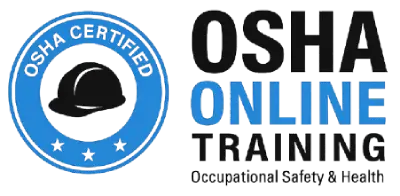
Ensuring safety is a critical responsibility for worksite and facility managers. Yet environmental, health, and safety (EHS) budgets continue to be squeezed by the generational labor shortage.
Traditional paper methods, one-on-one meetings, and manual recordkeeping waste field managers’ time and capture poor-quality data that can lead to compliance gaps, increased risks, and inefficiency.
Digital jobsite safety compliance tools, guided by professionals with OSHA training, provide an easy and effective solution, helping project and safety managers protect their teams, meet regulatory standards, and streamline operations. All with lower costs!
In this post, we’ll explore 12 specific ways digital tools can reduce risks and enhance safety processes learned at firms like OSHA Online Trainings
1. Automate Attendance Tracking
Safety compliance begins with knowing who is or was on-site, whether they are employees, a subcontractor, or a visitor. Digital tools automatically record who is on-site, identify them, record when they arrived, and how long they stayed. This also allows EHS managers to monitor sites remotely. Moreover, these logs are maintained for attendance purposes to establish a lasting digital footprint that is useful for audits, incident investigations, claims for insurance, or other claims.
The elimination of guesswork, driven by accurate data, enhances accountability across diverse teams. By strengthening access control, the logs also improve security at the job site. Lastly, the logs simplify workforce planning for project managers.
2. Capture Safety Certifications and Training
During onboarding or as part of badging, digital tools can capture workers’ certifications, licenses, and training records. Field managers can ensure everyone meets minimal qualifications before supervisors assign them tasks that put them at risk.
Before delegating high-risk jobs like repairs and maintenance, supervisors can rapidly establish the credentials, minimize liability, and minimize the possibility of providing the wrong workers with the chance to perform highly sensitive tasks.
3. Simplify Compliance Documentation
Digital logs store compliance records securely in the cloud, permanently, securely, and privately, making them easy to retrieve. Compliance records are stored in the cloud permanently, privately, securely, and safely, and can be easily retrieved on digital logs. This saves the burden of having paper files, the chances of losing documentation are less, and the inquiry or inspection of the required documents is made possible in real-time for managers.
4. Safety Screenings at Check-In
All projects will have general safety requirements, such as the use of PPE. Digital check-in apps with customizable safety, hazard, and health screening questions and answers will prove that your jobsite’s general requirements are met. And the daily reminders help build a culture of safety, even when an on-site safety manager is not present.
5. Distribute Safety Data Sheets Electronically
Workers and supervisors can access hazmat information electronically, eliminating printing and distributing binders while improving safety awareness. Instant digital access ensures that critical information is always available on-site, helping teams respond quickly to potential hazards and maintain compliance.
6. Record Incidents & Observations
Workers and superintendents can capture dangerous conditions or results with text, photos, or audio. These observations are logged securely for follow-up and reporting, and can be integrated with platforms like Procore. Having a reliable record improves accountability, speeds up corrective actions, and strengthens overall job-site safety practices.
7. Support Safety Walkthroughs
Genba (or Gemba) walkthroughs performed digitally will create a permanent record of safety observations and improvements.
Supervisors can also issue remedial action, monitor, and hold employees accountable by recording the problems when they occur. Digital walkthroughs can also deliver historical information that assists in determining which safety issues occur in all projects and promotes continuous improvement.
8. Safety Training in the Field
During onboarding and jobsite orientation, digital safety apps can distribute and play videos, documents, checklists, and courseware. Or conduct digital “tool talks”. These resources render the training more exciting and convenient so that the workers can remember significant information.
9. Customize Jobsite Safety Requirements
You can tailor check-in workflows to include jobsite-specific requirements, like background checks, proof of vaccinations, or PPE readiness. Customization means that each project will get its specific compliance requirements addressed, eliminate risks posed by unvetted individuals, and provide managers with assurance that only those workers who are well vetted are authorized to enter the premises.
10. Jobsite Hazard/Safety Analysis at Check-In
Projects with higher compliance requirements will want to be able to prove workers were made aware of hazards. JHA/JHA and Pre-Task plans need to be viewed and agreed to by workers. More advanced safety apps will transform a cumbersome paper process into an efficient digital process.
Such digital acknowledgments facilitate the documentation of accountability, the uniform articulation of risks, the validation of comprehension by the supervisor regarding the site-specific safety expectations, and the clarity regarding job functionality prior to the execution of tasks.
11. Emergency Action Plans
With real-time attendance data, supervisors can quickly communicate with workers on-site in emergencies like weather, natural disasters, or accidents. Or just invite them to the weekly tool talk.
With the invention of modern technology, immediate mass notification systems were created, making sure everyone stays informed, and rapid, cohesive actions can be taken in emergencies.
12. Adapt to Current Health Requirements
Configurable safety screening at check-in allows you to keep up with changing public health advisories, not just COVID, but influenza, Norovirus, etc., or follow the stricter requirements of healthcare construction sites. The ability to modify questions, update needs in real-time, and make adjustments to meet changing health regulations demonstrates these tools’ adaptability. They show that there is good working responsibility on behalf of management, positively influencing workers and clients, and ensuring uninterrupted and safe jobsite operations.
Conclusion
By automating and digitizing repetitive in-person tasks, such as attendance tracking, onboarding, and recordkeeping, digital compliance tools free up EHS managers and supervisors to focus on higher-value activities, improving productivity and extending the reach of safety professionals.
Digital jobsite safety compliance tools used by OSHA-certified professionals are not just about replacing paper—they’re about creating a safer, more efficient, and compliant jobsite. They help you institute a culture of safety.
By automating routine tasks, enhancing communication, and providing real-time data, these tools empower safety managers to focus on what matters most – protecting workers and reducing risks – while lowering management labor costs. And when used consistently over time, they can reduce EMR rates and workers’ compensation insurance costs.
If you’re ready to learn more about how digital safety compliance can improve your jobsite, consider exploring solutions like Safe Site Check In. They offer the easiest, most affordable app for construction and facility EHS managers.
Interesting Statistics:
- Implementing OSHA-certified safety programs can lead to a 78% improvement in the ability to negotiate better insurance terms. (Procore)
- Over 60% of construction accidents occur within an employee’s first year of work, highlighting the need for proactive, high-quality training. (BigRentz)
- OSHA estimates that construction companies could save $4 to $6 for every $1 they invest in safety training. (Surety Bonds)
By integrating digital safety compliance tools, companies can address these statistics head-on, fostering a safer and more efficient work environment.

